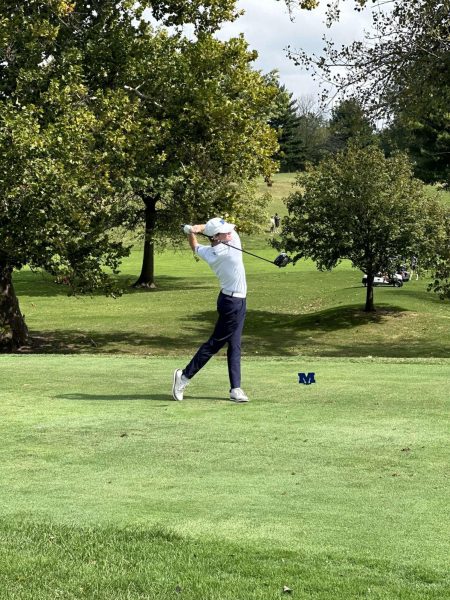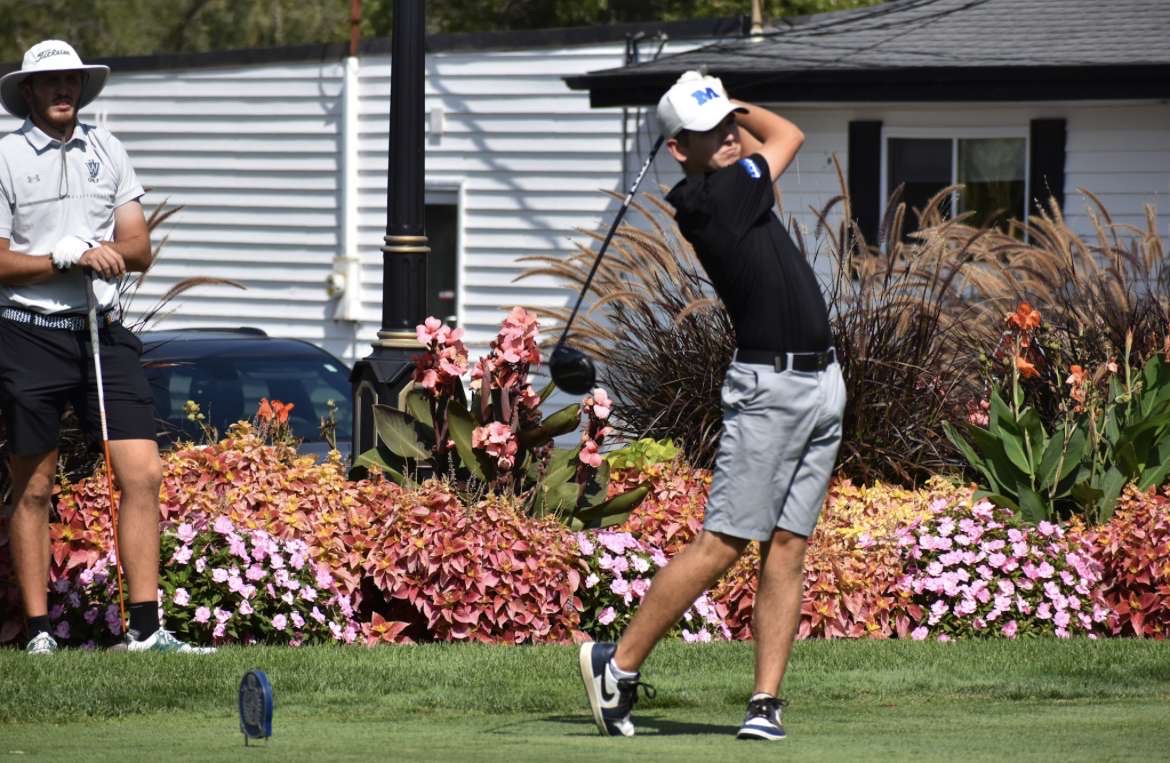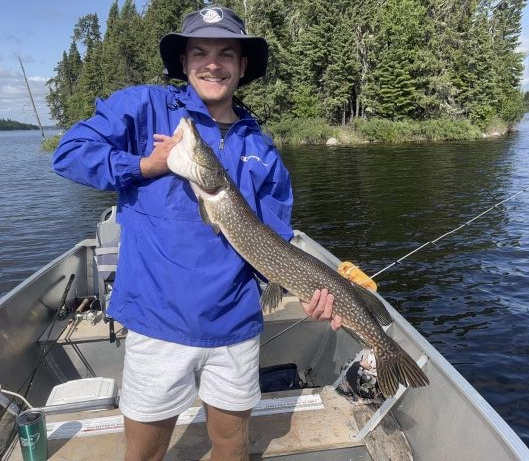Receiving contributions from freshmen, transfers, international students, and returners, the Millikin men’s golf team is succeeding while embracing all hands-on deck approach.
Led by Head Coach Sam Osborne, the team has not placed outside of the top four in a tournament this year, including a first-place finish at Augustana’s Highland Classic and a team record low for total strokes at an away tournament, finishing with 276 total.
“We were around six over after the first round,” Osborne said. “We just responded. We shot six over the first day, then to pop off and shoot 12 under the next day was pretty sweet.”
This tournament embodies how Millikin’s season has gone this fall. Although there have been some inconsistencies on the scorecards, the team has shown flashes of huge potential like the Highland Classic showing. However, Osborne realizes that those inconsistencies can be worked through with patience.
“We’re diving into the stats,” he said. “We’re making too many bogeys on par fives. We limited the number of double bogeys overall, and that certainly has helped us in the tournaments where we’ve shot well. In those tournaments we were under par on the par fives, so a little bit of it is our course management on par threes and fours. We are extremely competitive in general, which is good compared to other teams we face.”
A huge reason for the success of the Big Blue is the freshmen class that arrived in Decatur two years ago. One of these now juniors is Luke Bradley, who consistently makes the cut to compete at the varsity level. He is one of many who has consistently made an impact on an extremely competitive Millikin team, competitiveness being one of the greatest catalysts for the team’s success, having doubled in size since just last year.
“This team is very young and unproven,” Bradley said. “We could see shocking results if everyone plays well at the same time. This team has the most potential I’ve ever seen.”
Bradley has been extremely impressed with the way that the new freshmen have adapted to college life and competing at the college level.
“Usually in high school, it’s just nine holes, and you get in and get out,” he said. “A lot of college tournaments want to play 36-plus holes, so you have to be ready to have more endurance. The freshmen have done that well.”
The spring season is going to be a very competitive season for the Big Blue, in an even more competitive conference. However, senior captain Ian Berndsen looks forward to the challenge the spring will pose.

“It’s probably the strongest team depth wise since I’ve been here,” he said. “There’s obviously tough teams at conference like Wesleyan, Carthage, and North Central, but I like our chances going there.”
Berndsen has been quite pleased with the body of work that the team has put together so far, but he knows that the best is yet to come.
“[The culture] has been bought into very well,” he said. “When we have those long hours, two practices a day, or we have workouts at six and practice as four, I know that as a freshman I struggled with it, especially because my high school’s culture was not close to ours now. Now, it’s a whole lot more than that. There’s a whole lot more that goes into it if you want to continue to get better, especially at a higher level.”
To put into context how competitive the CCIW Conference is for golf, simply look at the results from the Midwest Region Classic, a tournament with 40 teams. Of the top ten spots, six were occupied by a school representing the CCIW, including Illinois Wesleyan’s “B” team.
“It just shows how good the conference is,” Osborne said. “It was really cool when we play that well and shoot under par. When we do that, we can compete with anyone in the country.”


